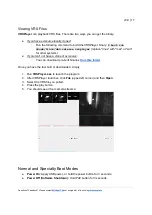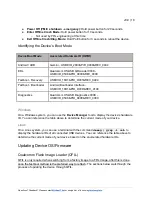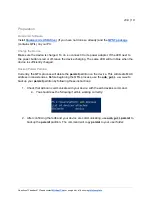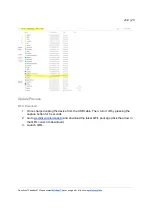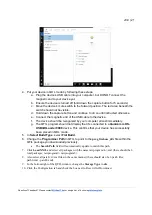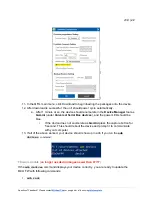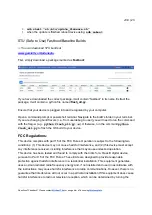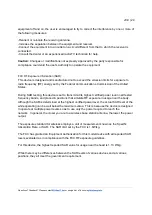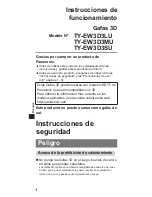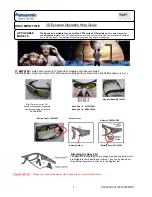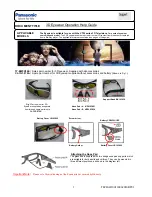
v0.9 | 24
Questions? Feedback? Please contact
Michael Thot
or assign him a Task using
this template
.
equipment off and on, the user is encouraged to try to correct the interference by one or more of
the following measures:
-Reorient or relocate the receiving antenna.
-Increase the separation between the equipment and receiver.
-Connect the equipment into an outlet on a circuit different from that to which the receiver is
connected.
-Consult the dealer or an experienced radio/TV technician for help.
Caution:
Changes or modifications not expressly approved by the party responsible for
compliance could void the user‘s authority to operate the equipment.
FCC RF Exposure Information (SAR)
This device is designed and manufactured not to exceed the emission limits for exposure to
radio frequency (RF) energy set by the Federal Communications Commission of the United
States.
During SAR testing, this device is set to transmit at its highest certified power level in all tested
frequency bands, and placed in positions that simulate RF exposure in usage near the body.
Although the SAR is determined at the highest certified power level, the actual SAR level of the
while operating can be well below the maximum value. This is because the device is designed
to operate at multiple power levels so as to use only the power required to reach the
network. In general, the closer you are to a wireless base station antenna, the lower the power
output.
The exposure standard for wireless employs a unit of measurement known as the Specific
Absorption Rate, or SAR. The SAR limit set by the FCC is 1.6W/kg.
The FCC has granted an Equipment Authorization for this model device with all reported SAR
levels evaluated as in compliance with the FCC RF exposure guidelines.
For this device, the highest reported SAR value for usage near the head is 1.13 W/kg.
While there may be differences between the SAR levels of various devices and at various
positions, they all meet the government requirement.








